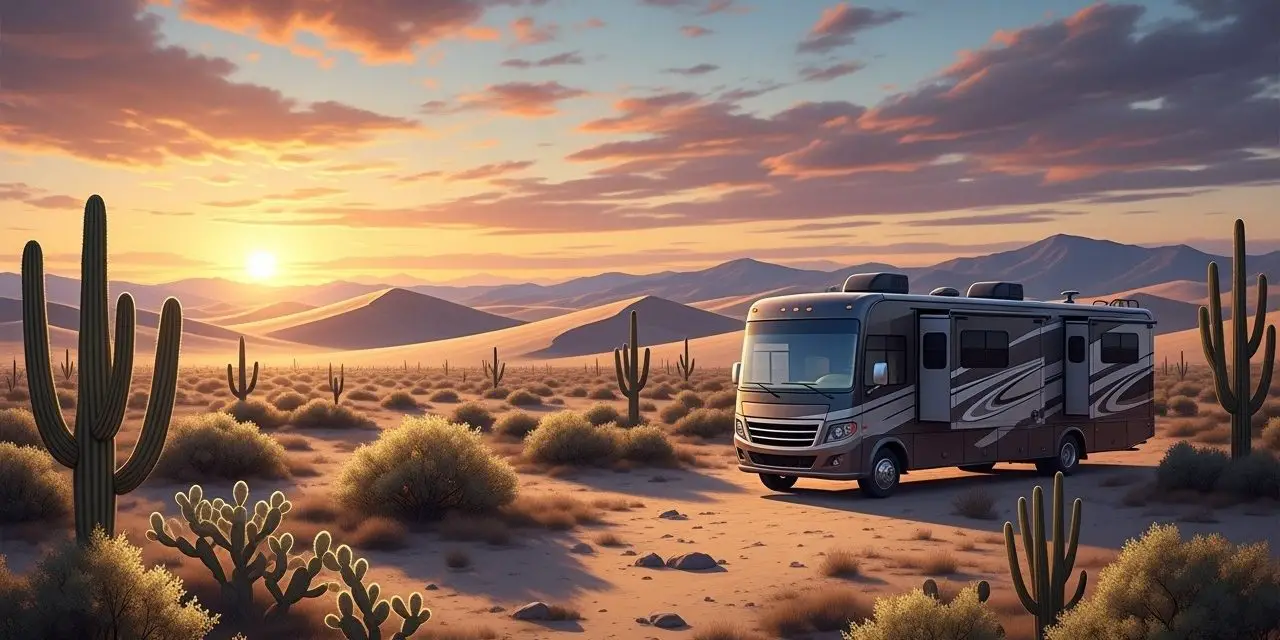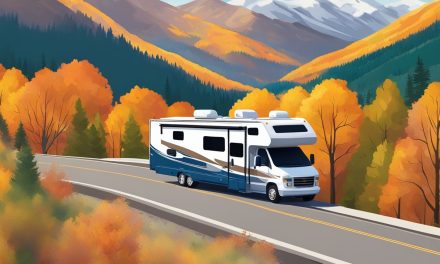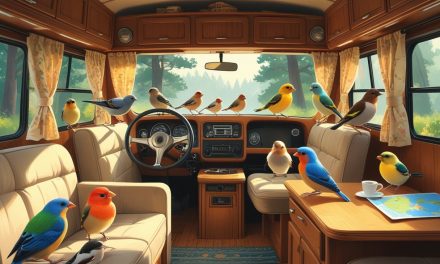Would you like to save this article?
Have you ever sat in your RV at 3 AM and heard absolutely nothing? Not even your own heartbeat? It might sound impossible in our noisy world, but there are still 10 incredible places across America where silence isn’t just golden—it’s practically supernatural.
These destinations offer RV travelers a chance to experience what true quiet sounds like, from certified low-decibel wilderness areas to remote landscapes untouched by modern noise pollution. Whether you’re seeking the deepest meditation experience or simply want to escape the chaos of everyday life, these quiet sanctuaries will restore your sense of peace.
Pack your RV and prepare for a journey into America’s most serene wilderness destinations.
10. Death Valley National Park, California – Where Silence Meets Extreme Beauty
Death Valley stands as one of the hottest, driest, and quietest places in North America. Located in eastern California, this surreal landscape of sand dunes, salt flats, and rugged mountains creates an otherworldly experience for RV travelers.
Key Statistics:
- Elevation: 282 feet below sea level at Badwater Basin
- Temperature Records: 134°F (world record)
- Size: 3.4 million acres
- Annual Visitors: Over 1.7 million
| Wildlife Residents | Noise Sources |
|---|---|
| Coyotes | Wind through canyons |
| Desert Foxes | Scurrying animals |
| Bighorn Sheep | Occasional aircraft |
You might think Death Valley would be boring because of its harsh environment, but you’ll discover that watching paint dry is actually more exciting than listening to the “deafening” silence here. The acoustical baseline studies show that Death Valley maintains some of the lowest ambient noise levels recorded in any U.S. National Park, with measurements often dropping below 20 decibels during calm periods.
9. Great Sand Dunes National Park, Colorado – Towering Silence
The Great Sand Dunes National Park features the tallest sand dunes in North America, rising over 750 feet into the Colorado sky. Located in the San Luis Valley, this unique landscape offers RV travelers a chance to experience profound quiet amid stunning natural beauty.
Remarkable Quiet Facts:
- Background noise levels: Under 20 decibels (quieter than a whisper)
- Potential designation: First U.S. “Quiet Zone” certification
- Dune height: Up to 750+ feet tall
- Ecosystem diversity: Alpine forests to desert sands
You’ll find that sandboarding down these massive dunes is probably the loudest thing you’ll hear for miles—which says something about how quiet this place really is. Quiet Parks International has been monitoring this location as a potential Wilderness Quiet Park, recognizing its exceptional natural soundscape preservation.
8. Boundary Waters Canoe Area, Minnesota – Certified Wilderness Quiet
The Boundary Waters Canoe Area Wilderness earned the prestigious “Wilderness Quiet Park” designation in 2023, becoming only the second location in the United States to receive this international recognition.
Wilderness Statistics:
- Size: Over 1 million acres
- Water bodies: 1,200+ miles of canoe routes
- Annual visitors: Approximately 150,000
- Quiet certification: Official Wilderness Quiet Park status
| Natural Sounds | Prohibited Sounds |
|---|---|
| Loon calls | Motor vehicles |
| Paddle strokes | Aircraft (restricted) |
| Wind through pines | Motorboats (limited areas) |
You’ll discover that the only traffic jams here involve canoes politely waiting for loons to cross the water—and honestly, that’s a problem you’ll never mind having. The acoustic monitoring data collected by Quiet Parks International shows this wilderness maintains pristine natural soundscapes with minimal human-caused noise intrusion.
7. Hoh Rainforest, Olympic National Park, Washington – One Square Inch of Perfect Silence
The Hoh Rainforest contains what researchers call “One Square Inch of Silence”—potentially the quietest spot in the continental United States. This moss-covered location sits 3.2 miles up the Hoh River Trail.
Silence Research Data:
- Location: Moss-covered log marker
- Acoustic researcher: Gordon Hempton’s decade-long study
- Natural sound buffer: Dense old-growth forest
- Tree ages: Some over 500 years old
You might expect a rainforest to be noisy with all those dripping sounds, but you’ll find that Mother Nature apparently installed the world’s best soundproofing system here. Olympic National Park benefits from having no roads through its interior, creating a natural acoustic sanctuary where traffic noise cannot penetrate the dense temperate rainforest.
6. Badlands National Park, South Dakota – Prairie Silence
Badlands National Park offers 244,000 acres of rugged wilderness featuring colorful rock formations, fossil beds, and mixed-grass prairie that creates natural sound barriers.
Badlands Breakdown:
- Established: 1978 as National Park
- Fossil discoveries: 34-million-year-old specimens
- Wildlife: 400+ bison, prairie dogs, black-footed ferrets
- Rock formations: Layered sedimentary spires and pinnacles
| Quiet Zones | Natural Acoustics |
|---|---|
| Wilderness areas | Wind-carved canyons |
| Fossil Exhibit Trail | Open prairie absorption |
| Cedar Pass | Minimal road access |
You’ll realize that even the prairie dogs here seem to whisper their conversations—probably because they don’t want to disturb the peace either. The vast open spaces and minimal development contribute to exceptional acoustic conditions, with sound carrying differently across the layered rock formations.
5. Big Bend National Park, Texas – Dark Sky Quiet
Big Bend National Park protects over 801,000 acres along the Rio Grande River and holds the distinction of being part of the world’s largest International Dark Sky Reserve, spanning 9 million acres across two nations.
Dark Sky & Quiet Statistics:
- Reserve size: 9 million acres (world’s largest)
- Light pollution: Bortle Scale Class 1 (exceptional darkness)
- Annual visitors: Approximately 463,000
- Rio Grande frontage: 118 miles of river border
You’ll find that the stars here are so bright and the silence so complete, you might actually hear them twinkling—though that’s probably just your ears trying to make sense of the absolute quiet. The Greater Big Bend International Dark Sky Reserve status helps protect both visual and acoustic environments from modern pollution.
4. Crater Lake National Park, Oregon – Deep Water Silence
Crater Lake holds the distinction of being the deepest lake in the United States at 1,943 feet deep. The lake formed when Mount Mazama collapsed 7,700 years ago, creating this pristine acoustic environment.
Lake & Silence Facts:
- Lake depth: 1,943 feet (deepest in U.S.)
- Water clarity: Up to 100+ feet visibility
- Rim elevation: 7,000-8,000+ feet
- Snow season: 6-8 months annually
| Seasonal Quiet | Acoustic Factors |
|---|---|
| Winter closure | Snow sound absorption |
| Limited road access | High elevation isolation |
| Natural amphitheater | Caldera sound focusing |
You’ll discover that this lake is so quiet and clear, you might expect to see fish having silent conversations at the bottom—and honestly, in water this pure, you probably could. The high-elevation location and seasonal isolation during winter months create exceptional opportunities for natural soundscape preservation.
3. The Palouse, Washington – Agricultural Serenity
The Palouse region covers rolling grasslands across eastern Washington and northern Idaho, where 94% of original grasslands have been converted to agricultural use, creating a uniquely quiet rural landscape.
Agricultural Statistics:
- Wheat production: Major winter wheat region
- Land use conversion: 94% grasslands to agriculture
- Population density: Extremely low rural density
- Scenic designation: National Geographic recognition
You’ll find that the wheat fields here are so quiet, you can actually hear individual grain stalks growing—which is either very zen or slightly concerning for your hearing. The vast agricultural expanses and minimal population density create natural sound buffers across the rolling landscape.
2. Apostle Islands, Wisconsin – Lake Superior Serenity
The Apostle Islands comprise 21 islands scattered across Lake Superior’s pristine waters, offering sea caves, sandstone cliffs, and remarkable acoustic isolation from mainland noise pollution.
Island Statistics:
- Number of islands: 21 total islands
- Sea caves: Extensive sandstone cave systems
- Lake Superior: World’s largest freshwater lake by surface area
- Maritime heritage: Historic lighthouse preservation
| Natural Sounds | Acoustic Benefits |
|---|---|
| Wave action | Water sound masking |
| Seabird calls | Island isolation |
| Wind through caves | Natural amphitheaters |
You’ll realize that even Lake Superior’s waves seem to whisper here instead of crash—probably because they’re too polite to disturb the peaceful Canadian neighbors across the water. Friends of the Apostle Islands reports that urban noise levels have been doubling every ten years, making these islands increasingly valuable as acoustic refuges.
1. Antelope Canyon, Arizona – Slot Canyon Symphony
Antelope Canyon tops this list as nature’s ultimate sound chamber, where the narrow sandstone walls create perfect acoustic isolation. This Navajo Nation treasure welcomes over 1.1 million visitors annually to experience its unique silence.
Canyon Specifications:
- Annual visitors: 1.1+ million (2019 data)
- Canyon length: Upper Canyon ~100 yards
- Formation age: Millions of years of erosion
- Access: Guided tours required (Navajo Nation)
| Canyon Types | Quiet Experience |
|---|---|
| Upper Antelope | Ground-level access, more crowded |
| Lower Antelope | Quieter experience, fewer crowds |
| Canyon X | Alternative quieter option |
You’ll discover that your footsteps echoing off these ancient walls create the most interesting conversation you’ll have all day—and it’s probably more intelligent than most social media discussions anyway. The narrow slot canyon design creates a natural acoustic isolation chamber where outside sounds cannot penetrate, leaving visitors with only the sound of their own presence in this ancient geological wonder.
SOURCES
- Death Valley Soundscapes – National Park Service
- New Map Shows America’s Quietest Places – Science AAAS
- Great Sand Dunes Quiet Zone Designation – Colorado Public Radio
- Boundary Waters Wilderness Quiet Park Award – Quiet Parks International
- One Square Inch of Silence – Olympic National Park
- Olympic National Park Quietest Spot – BBC Travel
- Greater Big Bend Dark Sky Reserve – Dark Sky International
- Big Bend Night Skies – National Park Service
- Antelope Canyon Visitor Statistics – MaxTour
- Apostle Islands Quiet Discussion – Friends of Apostle Islands
- Crater Lake Sound Monitoring – OPB Oregon
- Palouse Agricultural Statistics – Washington State Dept. Agriculture





